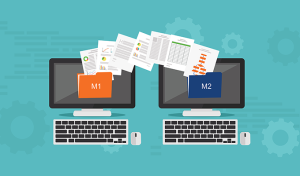5 Tips on How to Have a Successful Magento 2 Migration
Magento is among the very best e-commerce platforms. It provides merchants with an excellent shopping cart option and allows them to control and adjust content, functionality, and the look of their business with ease. However, migrating to Magento 2 can be difficult, so here are some tips to follow to make your migration easier.
1. Assess current e-commerce site
If you are considering migrating to Magento 2, you should understand what works great and what needs work. Having a full assessment of the current state of your site allows you to decide whether or not you need to migrate. It will also provide you with insight into the new functionality of the Magento 2 platform. Keep in mind that, this time next year, all Magento 1 installs will be end of life. This may be a large factor into your need to migrate to Magento 2.
2. Plan your Magento 2 migration
After you have fully assessed your current e-commerce situation, you need to plan for your M2 migration. There are many steps in the planning; two areas that often get over-looked are Design and Workflow.
The new Magento 2 platform has changed a lot from its predecessor, Magento 1. If you plan to migrate as a result of your need to redesign your site, then this is great timing. However, if this is not your intention, there is no need for a complete redesign. Regardless, you will have to address some changes. After all, this is a new platform, so you will most likely have to look at making some adjustments. Your pre-existing codes will not transfer over exactly as the Magento 2 platform has altered the file and folder structure significantly.
Along with design, be sure to document and make note of your workflows. This affects everyone from IT and marketing to customer service and sales. The migration to Magento 2 will change how some of these processes work. Be sure to plan for these changes so that the impacted departments are not caught off guard. Planning ahead of the migrations will allow each department to prepare for the changes in advance.
3. Maintain Data Integrity
The most important part of executing your migrations is the integrity of your data. We like to focus this into three parts; Backup, Sort, and Migrate. If you organize your data in these three ways, you can quickly remedy any issues or problems that may arise.
Let’s start with backing up your data. This is crucial because it ensures that you always have a log or record of where you started. Backing up your data will also create a safety net for you. Should something not go as planned during the migration, you can rest easy knowing that data will not be lost and can easily be recovered.
Next, start to divide your data into smaller units or groupings. This allows your data to be easily maintained and handled. Trying to migrate all your data at once can cause errors and possible corruption. A tactic we recommend is to divide your data in categories like product data, blog content, orders, taxes, and store data.
Lastly, when migrating, proceed with caution. You do not want to lose, accidentally delete, or corrupt data that is essential to your online store. Be sure to give this data migration the attention and care that it deserves. It is imperative not to rush the migration and place all of your data exactly where it should go. If you do not, your data migration could become much harder and take much longer than anticipated.
4. Review and Check your Data
Once your e-commerce site data has been migrated to the Magento 2 platform, it is important that you run a thorough check to be sure all of your data is there. You do not want to run into problems because a section of code is missing. Take the time to inspect your migrated data in order to ensure that everything makes it to the proper Magento 2 location. Remember, since the file and folder structure changed, your data may need to be in a different place than it was in the Magento 1 platform.
5. Know the system
Once you have completed the previous steps, you can begin to implement and test the features that Magento 2 provides. There are many tools built into the software. It is key to get to know what they are and how to use them. You can test out features such as analytics and reporting, SEO, new payment, shipping, and checkout. Since, you have made the decision to migrate to Magento 2, make sure you make the most of your investment.
Start Your Magento 2 Migration
The migration to Magento 2 is not a quick or easy process; however, if you follow these five tips, it will help you achieve a successful migration. Another option to consider is finding a fully Certified Magento 2 partner, like Weidenhammer, to assist you with the migration. Many partners have talented Magento 2 Certified developers to help perform the migrations or augment your team in the areas you may not have the skill set. Although this option is an additional investment, it may be worth it to avoid a possible, failed migration.
Weidenhammer has a full team of Magento 2 certified web developers, systems architects, and cloud architects who know anything and everything about Magento 2. We design, build, migrate and operate ROI-positive Magento web stores. Let us know if you want to discuss your needs today.


